Today we walked 12.1 miles (20 km) and descended 2,790 feet of elevation in 8 hours with breaks.
Remember that mountain we climbed up yesterday? Today we walked down it, and then further still, all day long. Whose idea was this anyway? ;-)
Walking downhill is so much harder than walking uphill. The knees, feet, and toes take such a beating. But at least it wasn’t raining. The seemingly endless, super-steep descents over loose rocks was no fun but I really feel for the pilgrims that hit that section on a bad weather day and have to deal with mud and slippery rocks as well. So it could have been worse. But not much. ;-)
The day started out great though, with a visit to another famous Camino landmark, “Cruz de Ferro” (the Iron Cross), another ancient monument dating back to Roman times. The cross is on top of a tall wooden pole standing on a hill full of small stones. Pilgrims have been bringing the stones from home and depositing them there for centuries, to represent leaving behind their burdens, or regrets, or some other weight they’re carrying through life, and leaving feeling lighter, both literally and figuratively.
When we got to the cross, I watched an older couple that spoke a language I didn’t recognize as they left their stones there. The woman started the video recorder on her phone as the man opened a small plastic bag with several small colored rocks inside. As he removed each one from the bag, he said what sounded like a name, with a weak, wavering voice and tearful eyes, and carefully placed each one at the base of the pole. I felt pain and maybe a bit of relief in his voice, and understood the importance of the tradition the two of them were carrying on.
We all four have been carrying stones of our own since we first started training for the Camino, so our stones have traveled across Spain just as far as we have, and were finally left behind today. It felt strange all day to not have my stone with me anymore, as if I’d accidentally left my passport behind.
Here are the photos for today, starting with one from last night at the great family-style dinner the albergue put on for us.
Finally entering the town of El Acebo:
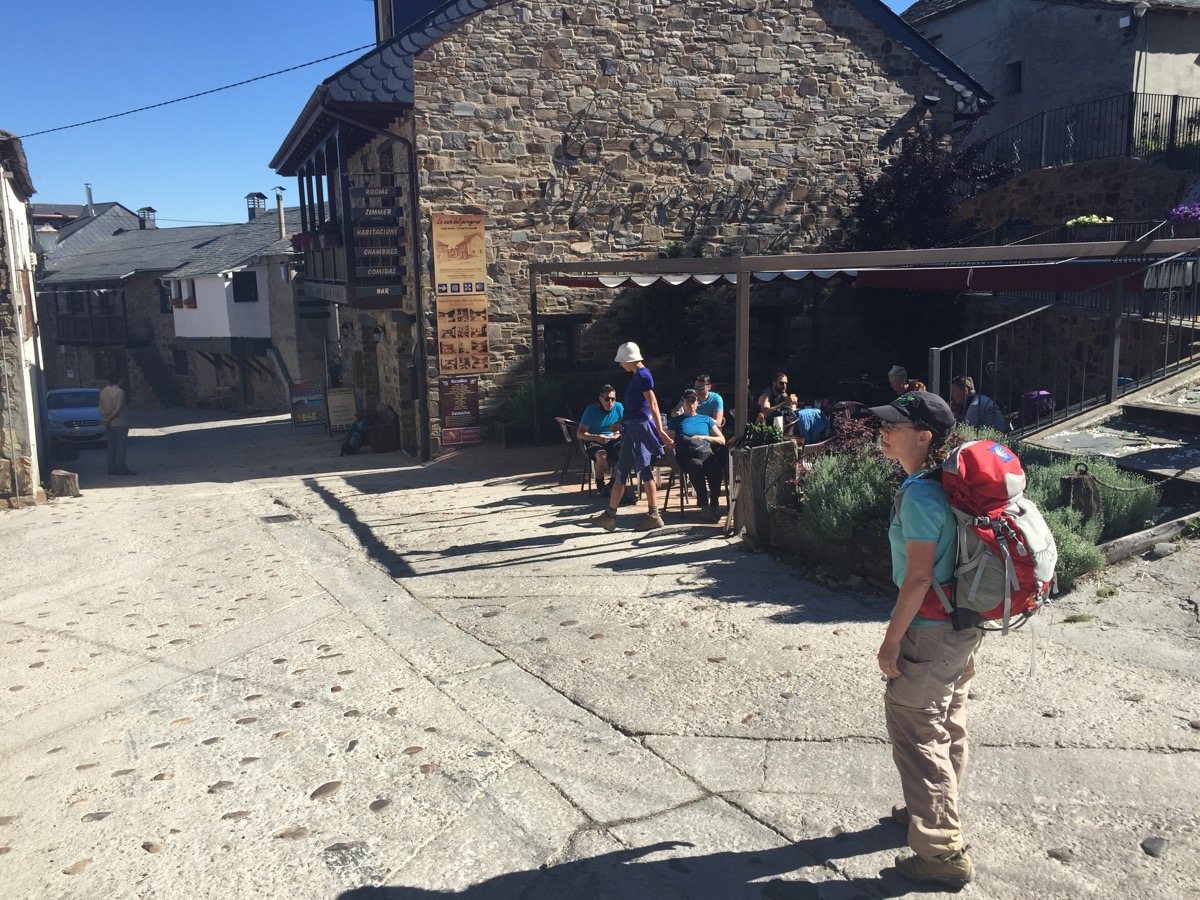
We were greeted by a modern day representative of The Knights Templar, who protected Christian pilgrims from the 1100s to the 1300s:


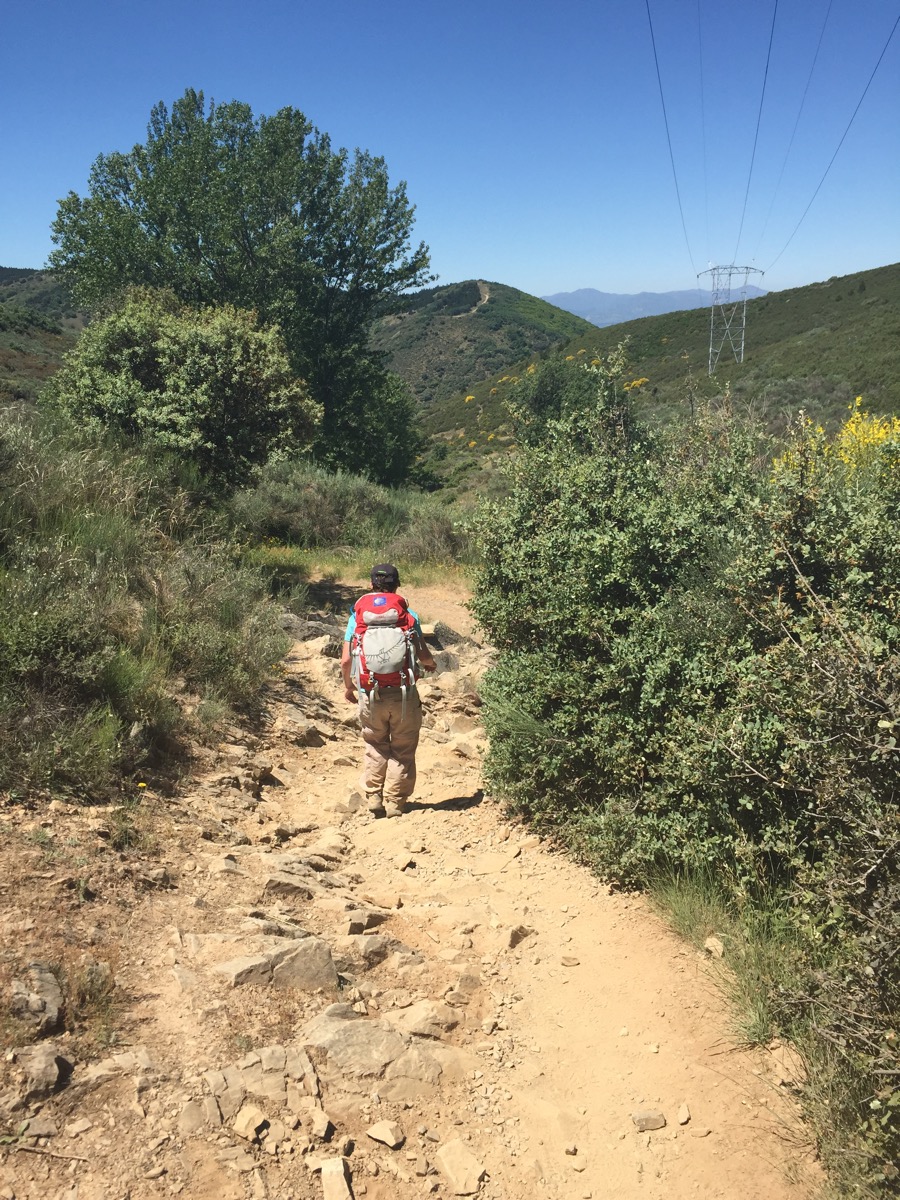
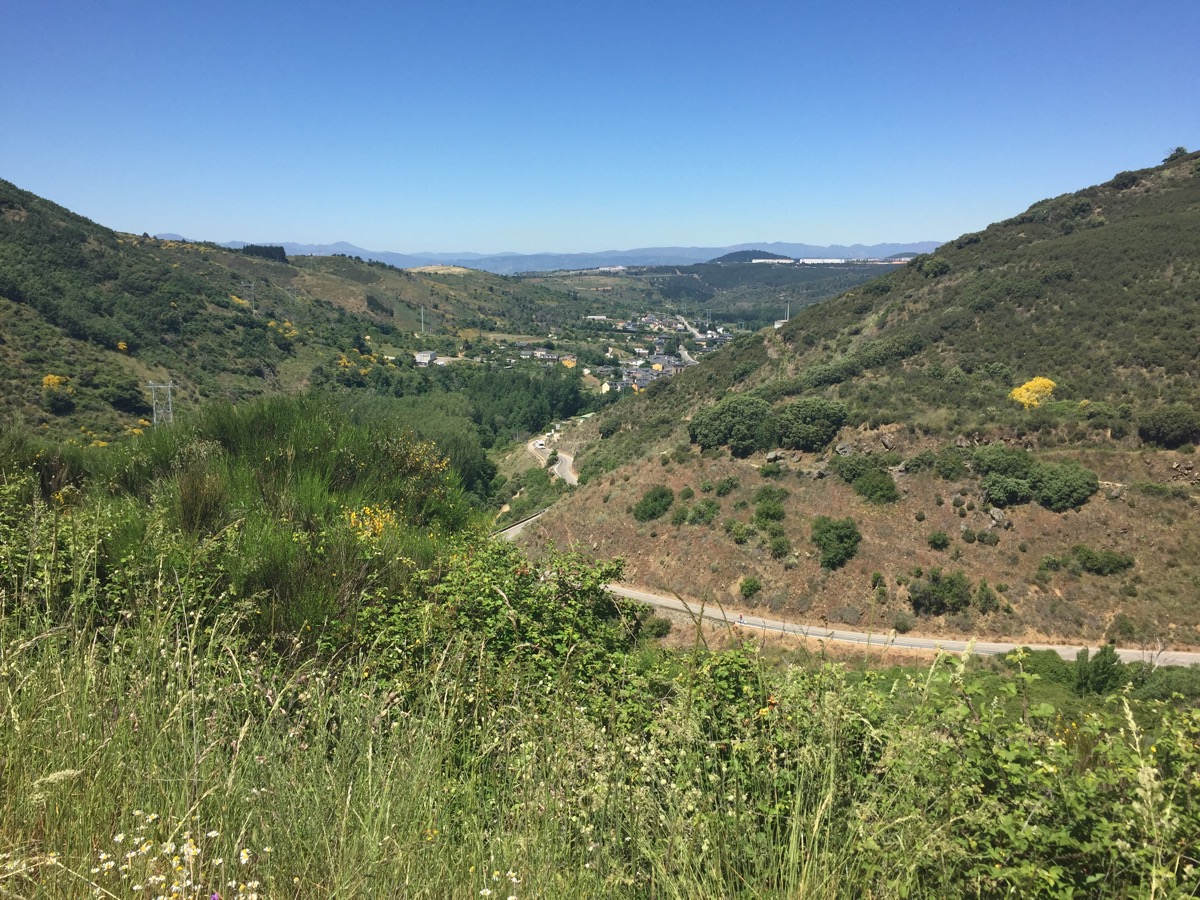

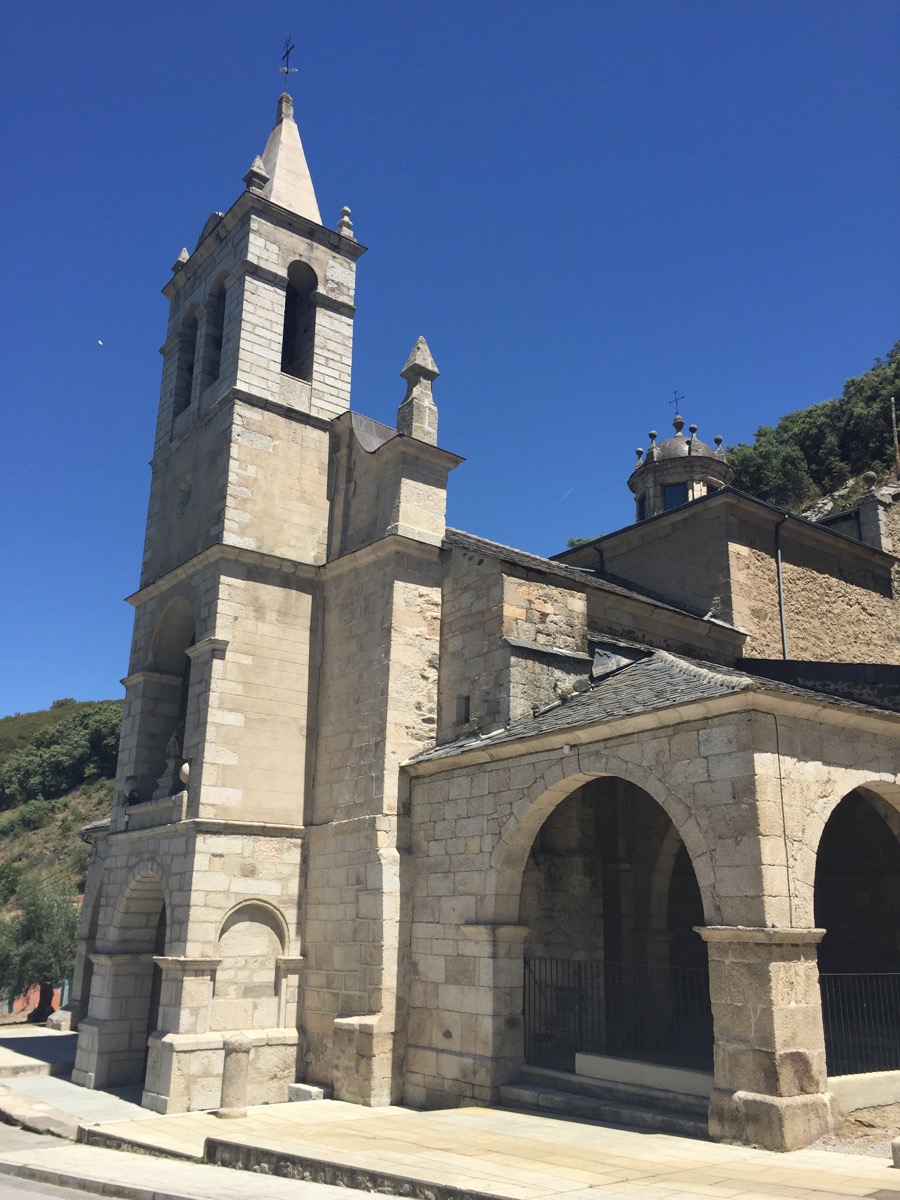
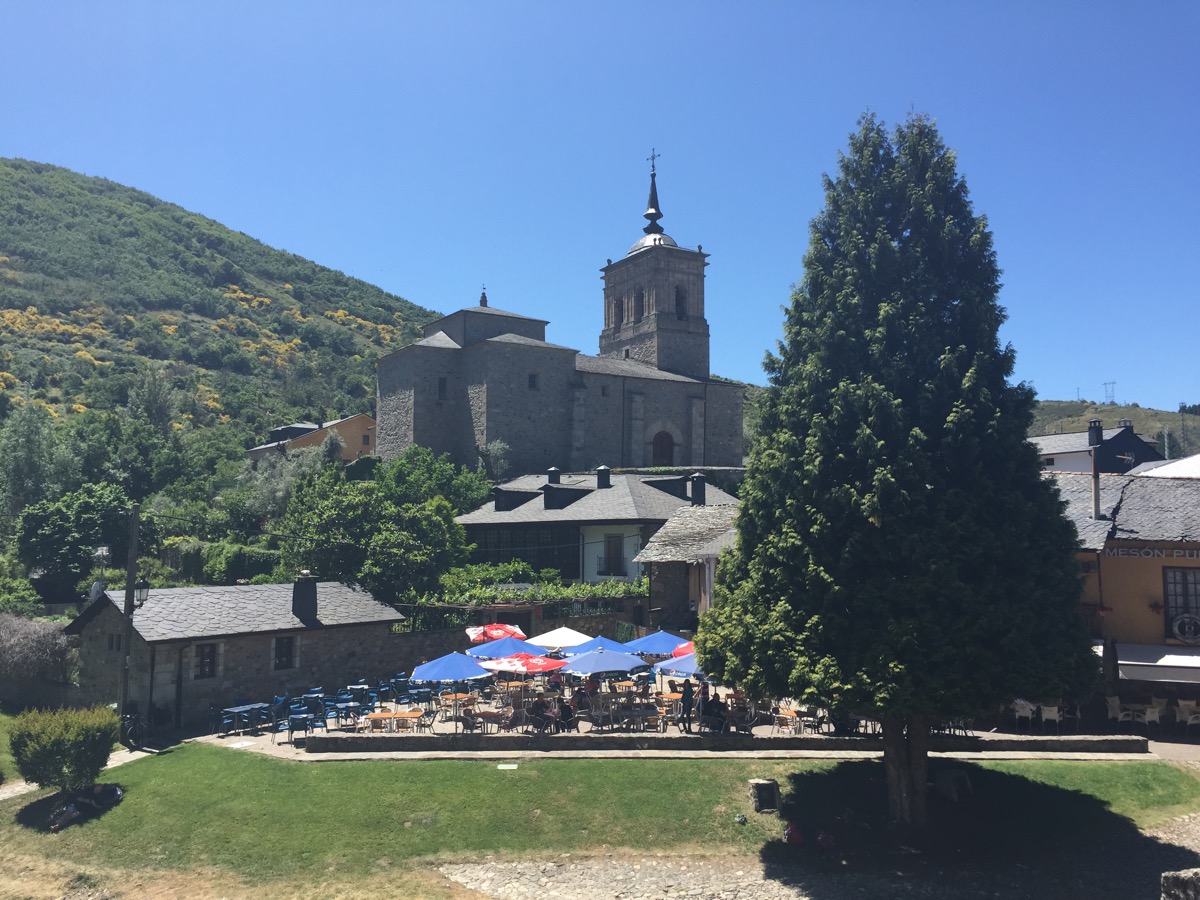

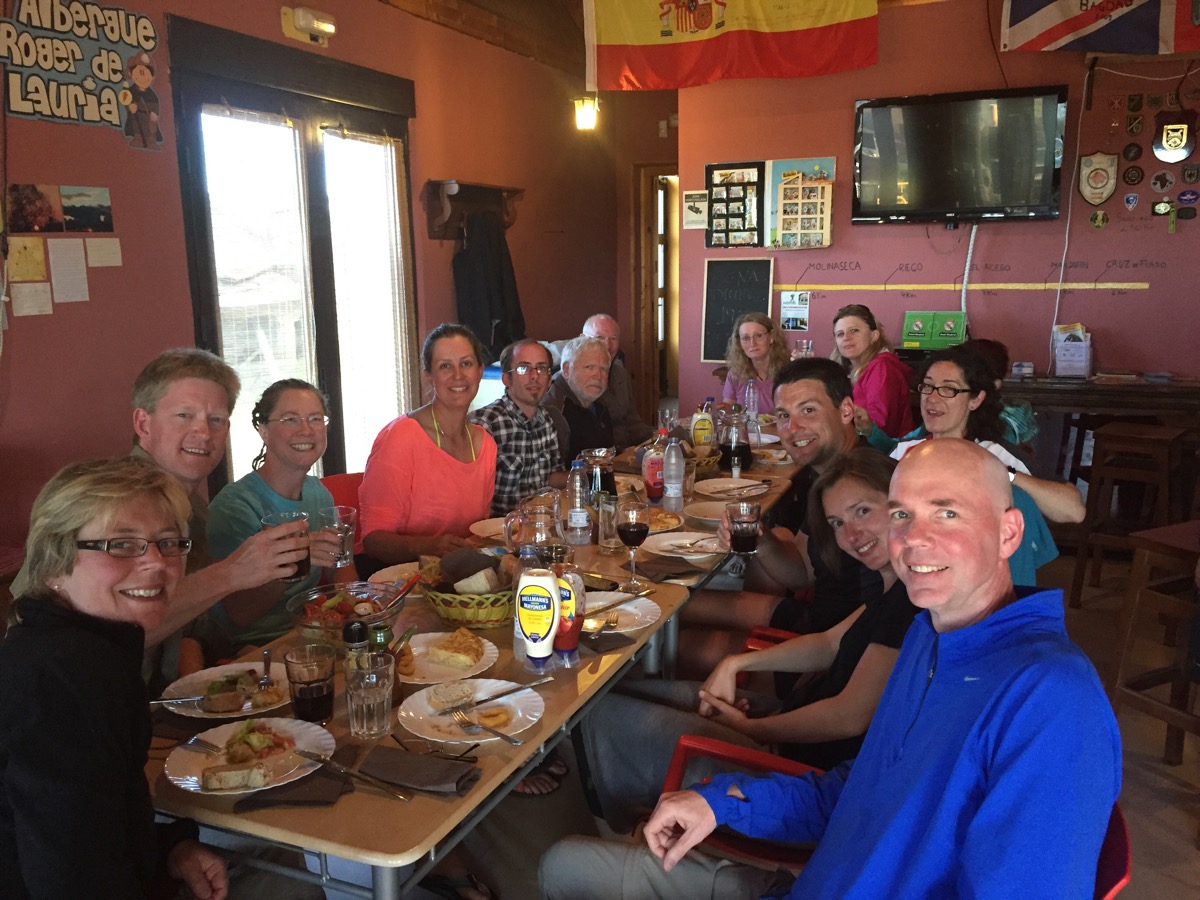

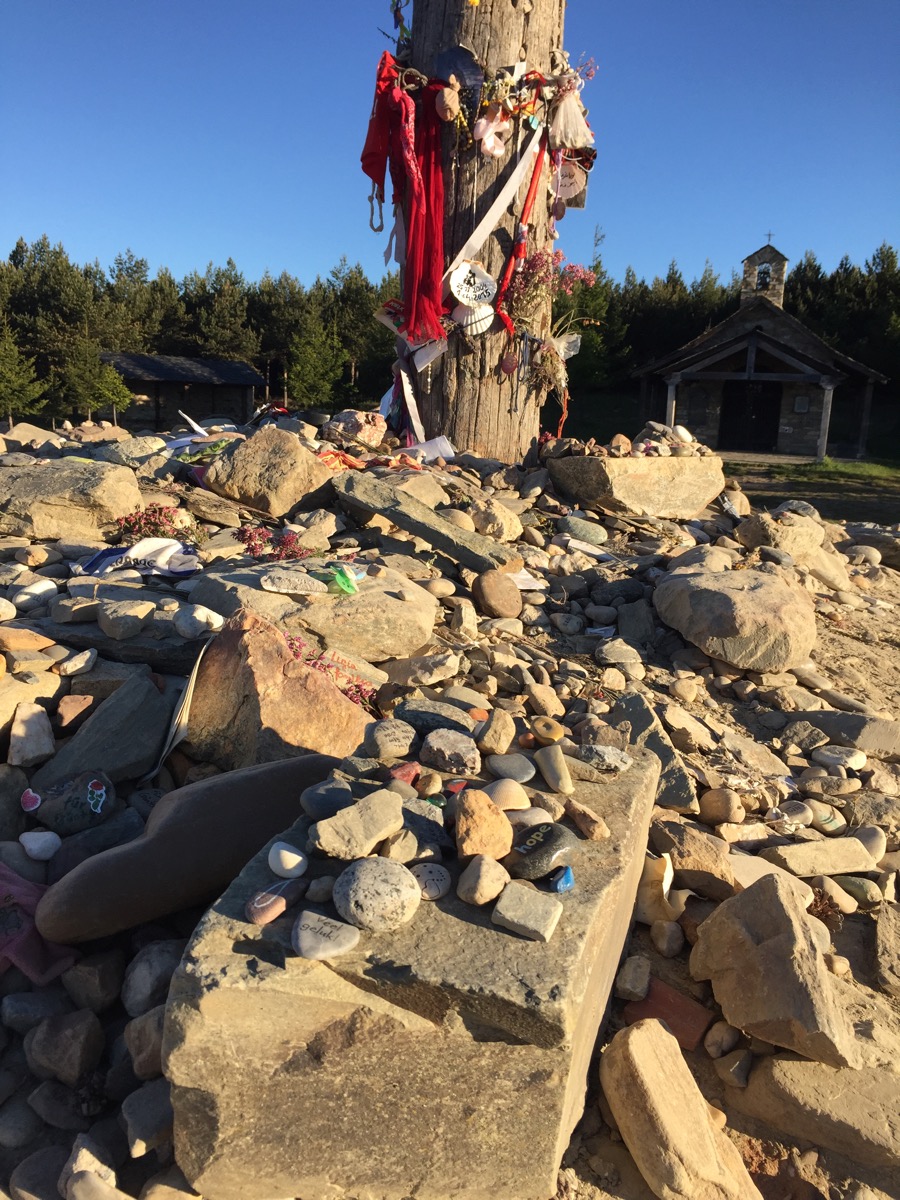
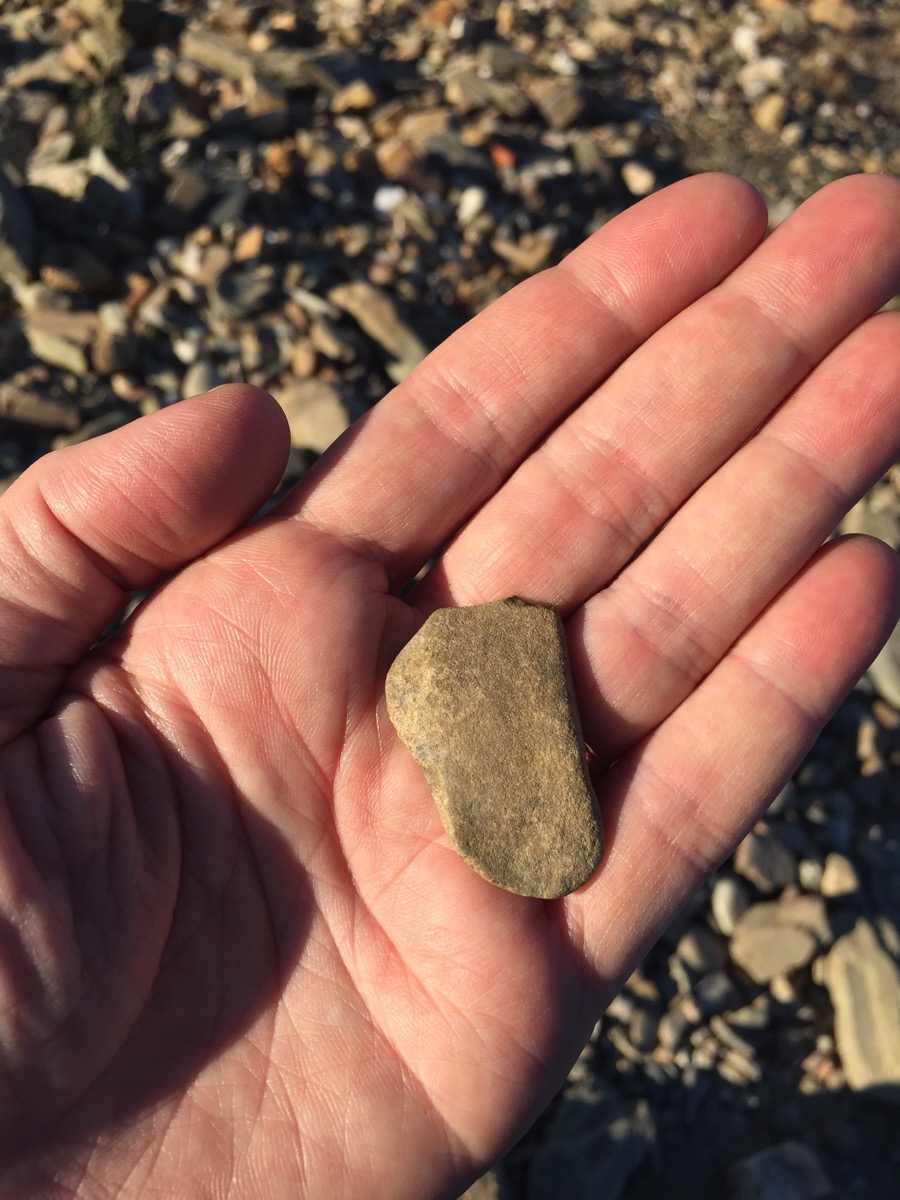
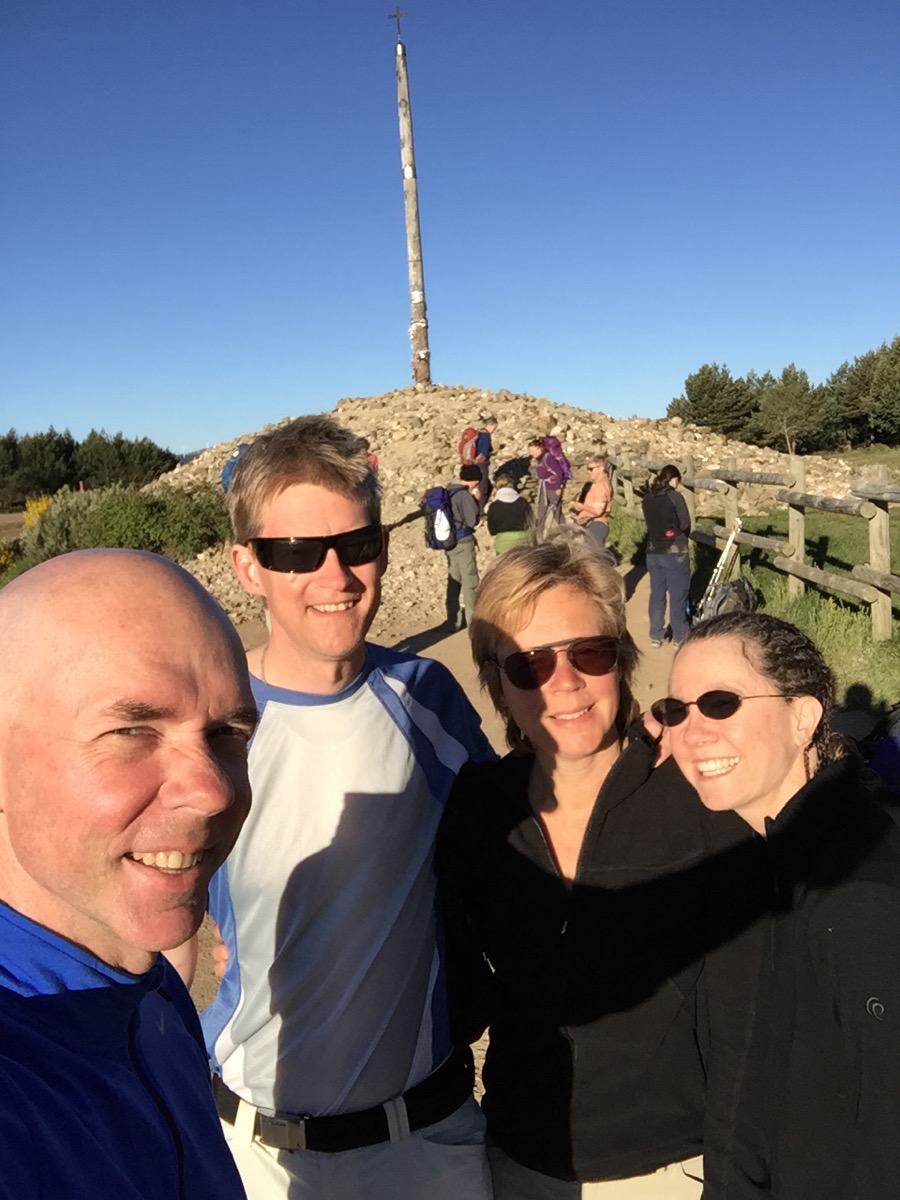



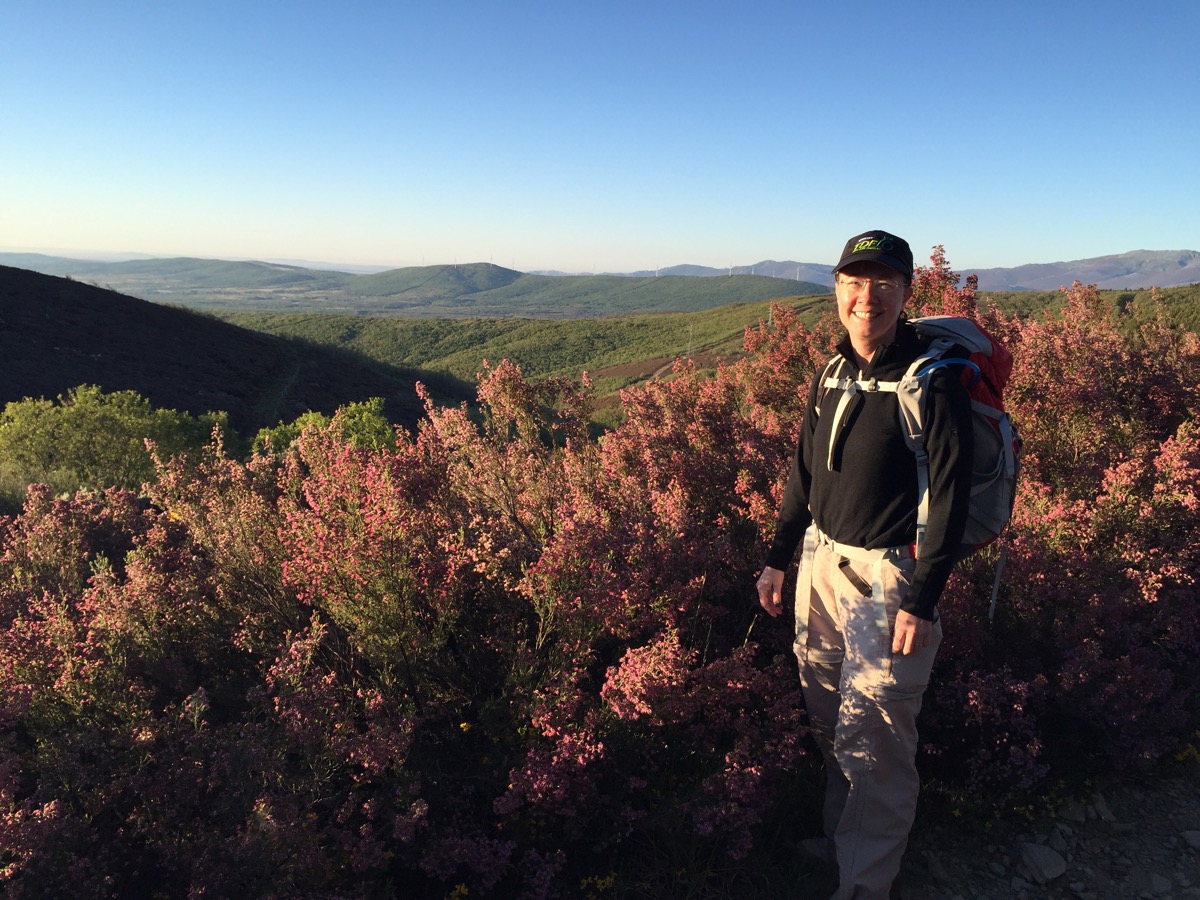

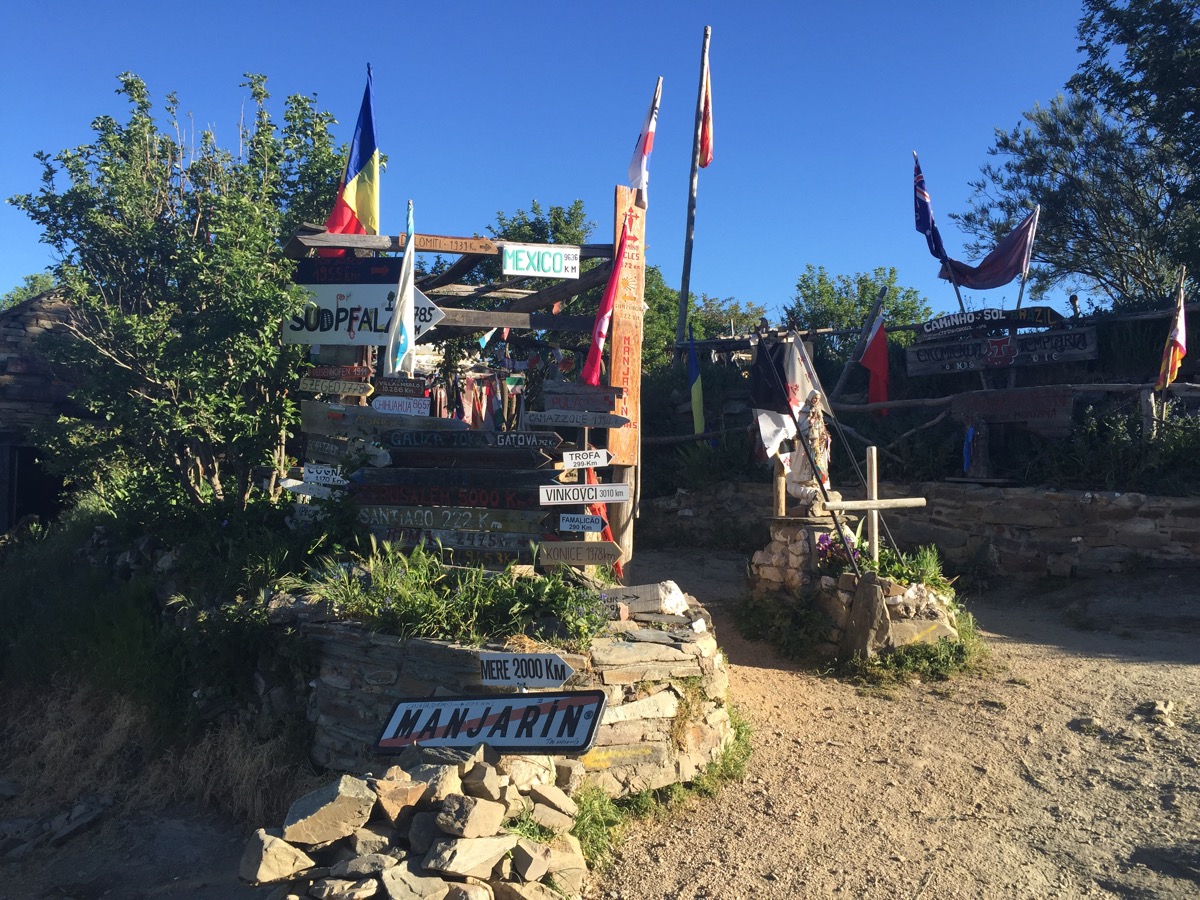



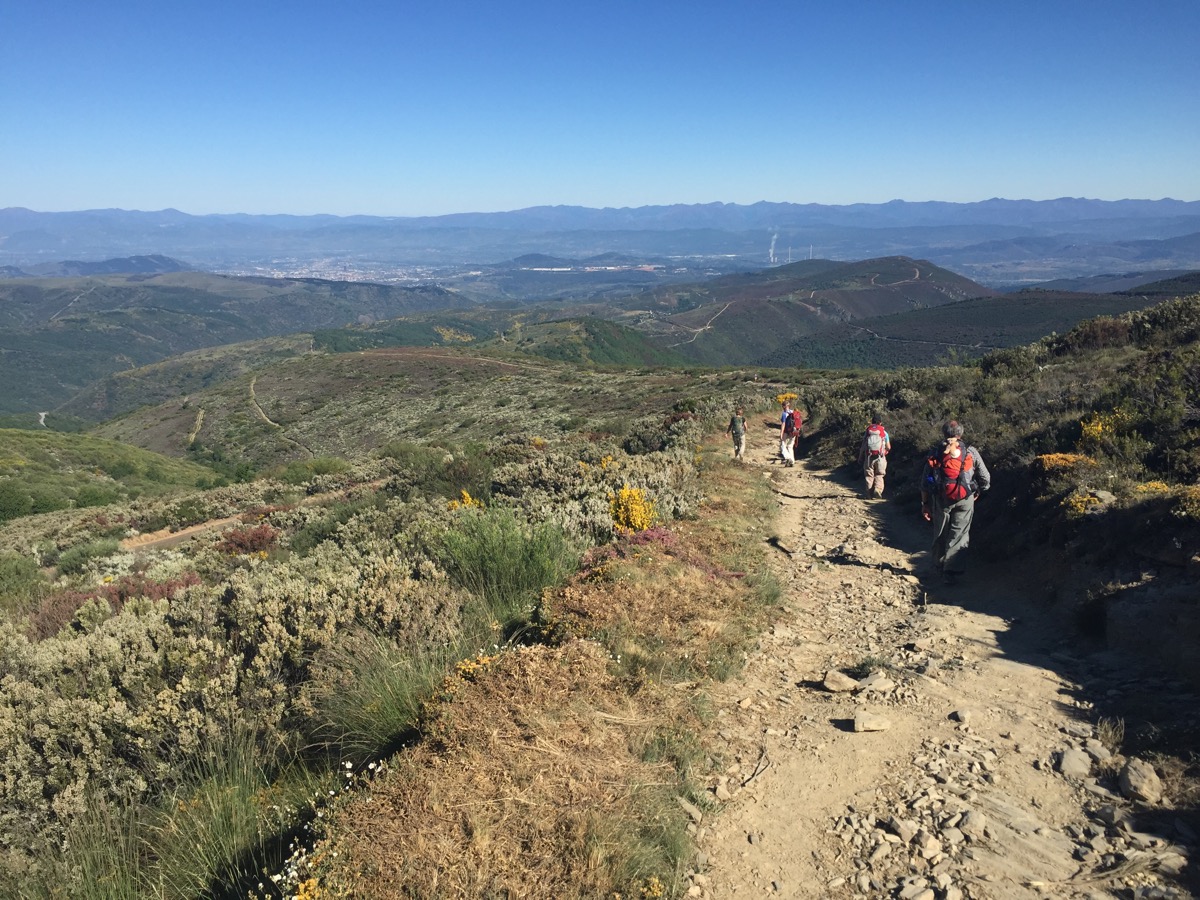
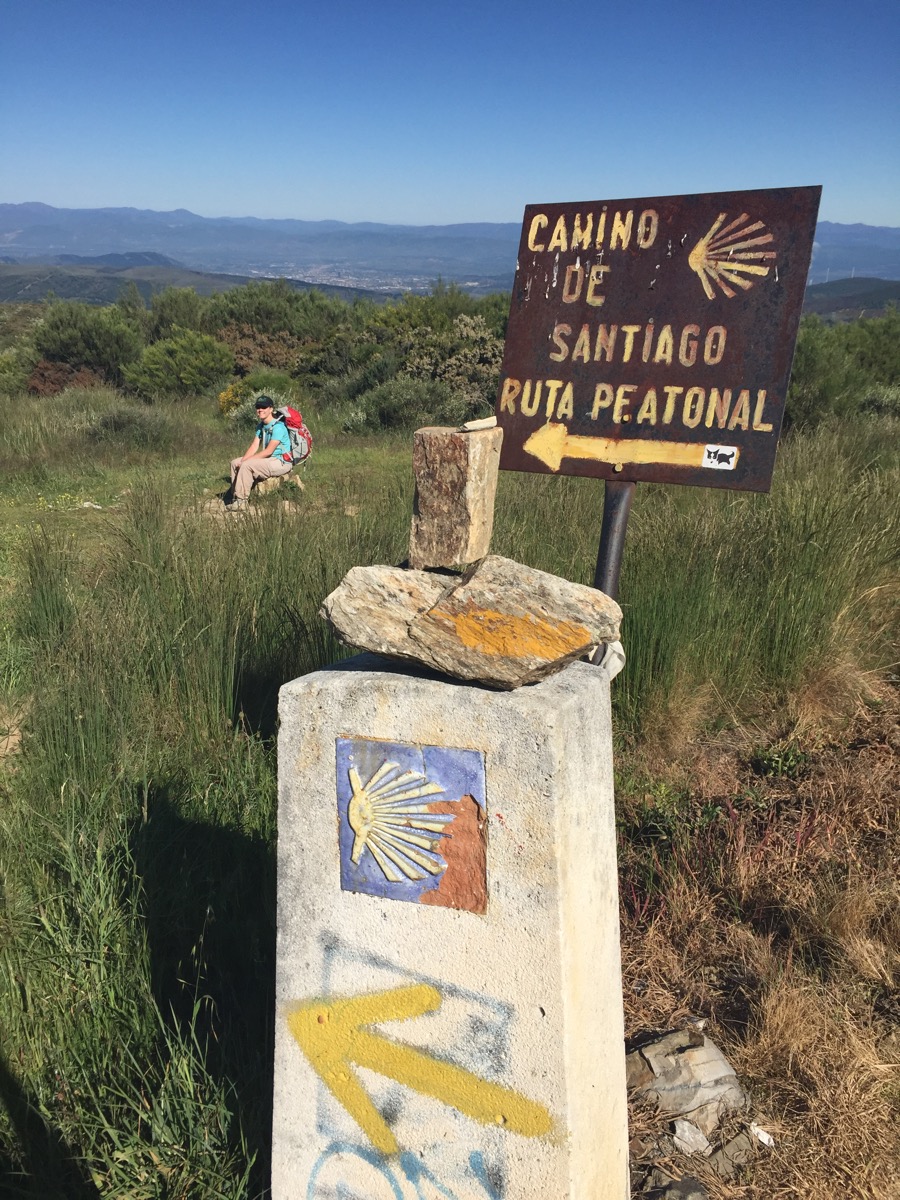


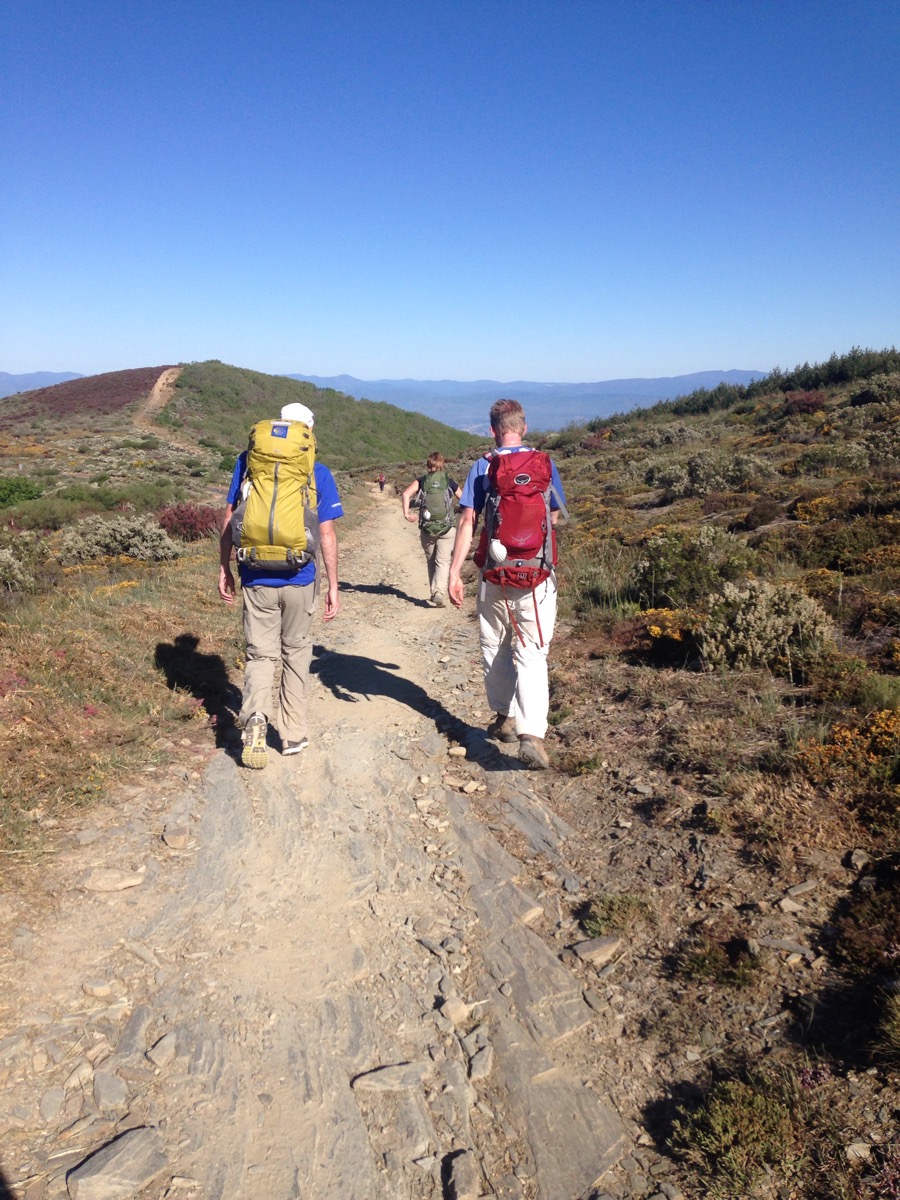


Still more beautiful countryside….!
My heart was touched at the story of the older couple leaving their “burdens at the cross”. And, how cool that all of you carried stones in preparation of this day so you could take part in the “tradition”!
Hi
I forgot to ask you about that traditions, if you had brought your stones and all. I’m glad you did, it’s really cool.
The story you told about the old couple is pretty sad. It could be anything, that they’re doing it for someone who’s sick or for someones who has passed away.
As you may already know the reasons to do the “Camino de Santiago” are diverse. In fact I don’t think many people do it to get the “indulgencias” anymore, but still many people do it as part of a promise or vow. Something they ask God for them or on behalf of someone else.
In a few days time you’re going to “O Cebreiro” close to where my family comes from (“Becerreá”)…
Now it’s not so popular, but when my mom was young it was very usual to go on a pilgrimage to “O Cebreiro” on September 8th (I think) as part of a promise or vow, without being part of the pilgrimage to Santiago. In fact the went on the opposite direction (“Becerreá” is closer to “Santiago” than “O Cebreiro”)
Many used to make the last stretch of the pilgrimage on their knees instead of walking from Piedrafita up to the top. My mother did it too at least once that I know (kneeling), but she went there many times and some members of my family still do. When you see the path, probably you’ll be amazed about what people can do if they have faith.
She went there walking or by car many times, not on her knees. Neither do my relatives go on their knees anymore, that was a long time ago.
Very cool that you had stones to leave behind. I love the symbolism of it.